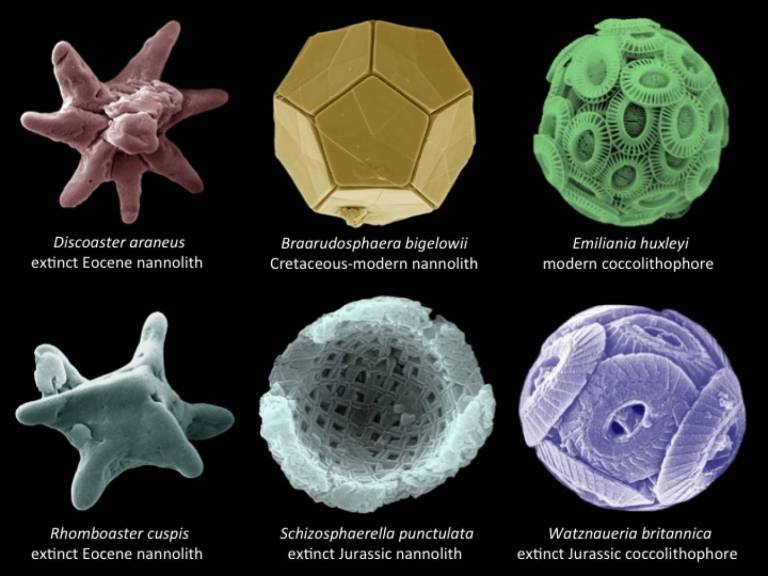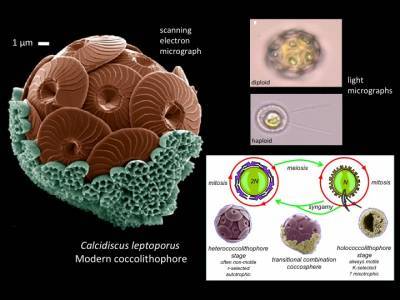
Though extremely small, calcareous nannoplankton are so abundant that they: 1) are visible from space as bright swirling blooms in the surface oceans, 2) form much of the calcareous ooze sediments that cover the modern ocean floors, and 3) make up the bulk of chalk and limestone rocks, such as the white chalk cliffs and downs of England. As well as the inherent beauty of the fossils and living coccoliths and coccospheres, they are of great scientific importance for a number of reasons, which include:
- quickly and easily providing the age of the rocks in which they occur; Biostratigraphic Age Dating
- giving information about the environment in which they lived, e.g., water temperature, amount of nutrients/food, etc; Environmental Indicators
- providing information about rates and trends of evolution, and the links between evolution and environmental change; Rates and trends of evolution
- providing information about the operation of global biogeochemical cycles, such as the carbon and sulphur cycles; and Nannoplankton and biogeochemical cycles
Calcidiscus
Modern coccolithophore cells, coccosphere and life cycle

 Close
Close

